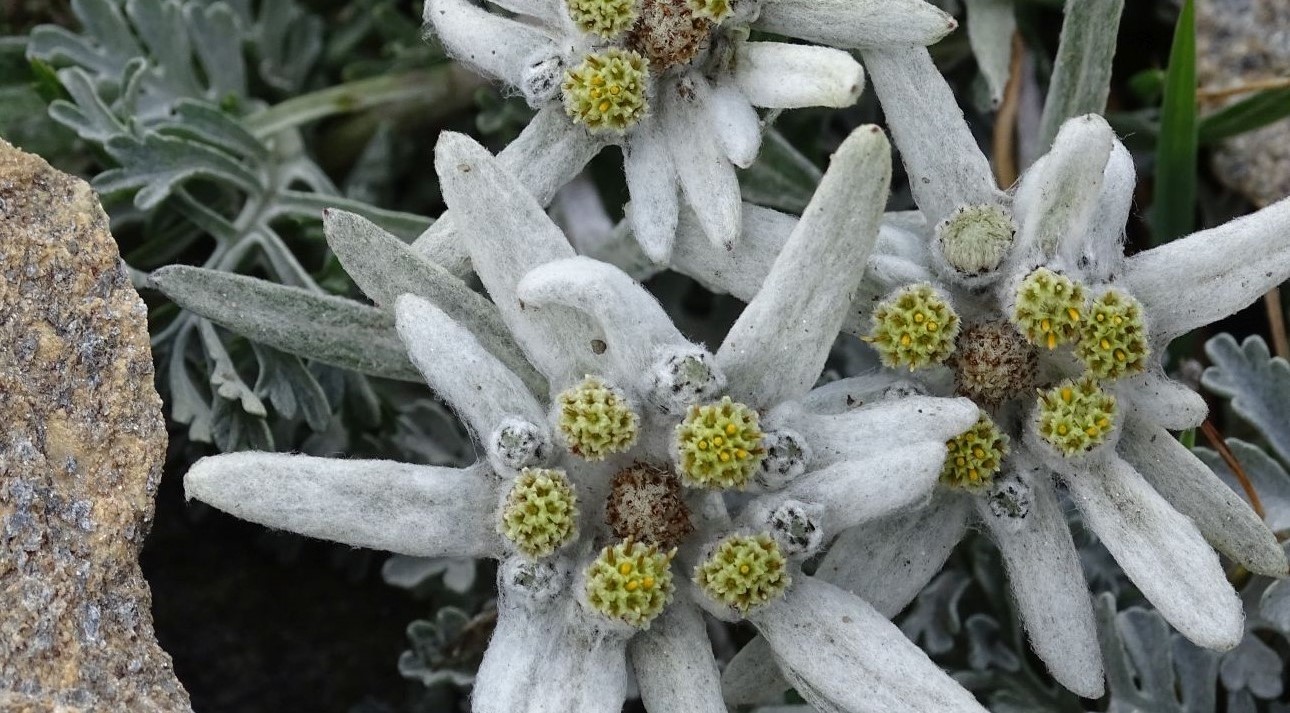
Leontopodium, commonly known as Edelweiss, is a fascinating plant that possesses a unique charm and captivates the hearts of nature enthusiasts around the world. This exquisite flower has long been cherished for its delicate beauty and has even become a symbol of love and adventure in some cultures.
But there’s more to Edelweiss than meets the eye. In this article, we will uncover nine captivating facts about Leontopodium that will deepen your appreciation for this remarkable plant. From its origins and symbolism to its medicinal properties and ecological significance, get ready to be amazed by the wonders of Edelweiss.
Key Takeaways:
- Leontopodium, also known as Edelweiss, is a resilient flower with medicinal properties, symbolizing love and devotion. It thrives in harsh environments and inspires legends, making it a captivating and cherished plant.
- Leontopodium blooms in the summer, attracting wildlife and creating a stunning sight. Protected in many countries, it is a symbol of alpine beauty and is essential for preserving the natural ecosystem.
Leontopodium is commonly known as Edelweiss.
Edelweiss is a beautiful flower that belongs to the Leontopodium genus. It is native to the Alpine regions of Europe and is known for its unique appearance and delicate white petals. This flower has become an iconic symbol of alpine beauty and resilience.
Leontopodium is a member of the sunflower family.
Despite its small size and delicate appearance, Leontopodium is actually a part of the Asteraceae family, which includes sunflowers and daisies. This family is known for its diverse and widespread distribution across the globe.
Leontopodium has adapted to survive in harsh environments.
One of the most fascinating aspects of Leontopodium is its ability to thrive in extreme conditions. It has developed adaptations such as fine white hairs on its leaves and stems, which help protect the plant from intense sunlight and cold temperatures in high-altitude environments.
Leontopodium has medicinal properties.
Leontopodium has long been used in traditional medicine for its various healing properties. It is believed to have anti-inflammatory and antioxidant effects, and extracts from the plant have been used to treat respiratory problems and skin conditions.
Leontopodium is a symbol of love and devotion.
In many cultures, Leontopodium is seen as a symbol of love, purity, and loyalty. It is often used in wedding bouquets and floral arrangements to represent everlasting love and devotion.
Leontopodium has inspired legends and folklore.
Throughout history, Leontopodium has been surrounded by legends and folklore. In some cultures, it is believed that picking an Edelweiss flower will bring good luck and protect against evil spirits. These stories have added to the mystique and allure of this enchanting flower.
Leontopodium is an important food source for wildlife.
Despite its delicate appearance, Leontopodium serves as a valuable food source for various animals in alpine ecosystems. It attracts pollinators such as bees and butterflies, and its seeds are consumed by birds and small mammals.
Leontopodium blooms in the summer months.
The blooming period for Leontopodium typically occurs during the summer months, between June and August. During this time, the mountain slopes are adorned with the beautiful white flowers, creating a breathtaking sight for hikers and nature enthusiasts.
Leontopodium is protected in many countries.
Due to its popularity and vulnerability, Leontopodium is protected in several countries where it naturally occurs. It is illegal to pick or uproot these flowers without the proper permits, ensuring their preservation for future generations to enjoy.
Conclusion
In conclusion, Leontopodium, commonly known as Edelweiss, is a fascinating plant with a rich history and unique characteristics. From its symbolism in various cultures to its medicinal properties, there is much to learn and appreciate about this captivating flower. Whether you admire its beauty or want to explore its potential benefits, Edelweiss is definitely a plant worth knowing about. So go ahead and dive into the world of Leontopodium to discover even more interesting facts about this remarkable plant.
FAQs
Q: What is the significance of the name “Leontopodium”?
A: The name “Leontopodium” is derived from the Greek words “leon” (lion) and “podos” (foot), referring to the plant’s woolly, whitish appearance that resembles a lion’s foot.
Q: Where is Leontopodium commonly found?
A: Leontopodium is mainly found in alpine regions of Europe, particularly in the Alps, Pyrenees, and Carpathians. It thrives in high altitudes and rocky terrains.
Q: What does the Edelweiss symbolize?
A: Edelweiss is often seen as a symbol of courage, purity, and alpine beauty. It has been cherished for centuries and is associated with love, loyalty, and protection against danger.
Q: Is Edelweiss endangered?
A: Yes, Edelweiss is considered an endangered species in many parts of its natural habitat. Due to overharvesting and habitat destruction, its populations have been declining. It is now protected in several countries.
Q: Are there any medicinal uses of Edelweiss?
A: Yes, Edelweiss has a long history of being used in traditional medicine. It is believed to have anti-inflammatory, antioxidant, and antimicrobial properties. It is also used in skincare products for its soothing and healing effects.
Q: Can Edelweiss be grown in home gardens?
A: Yes, Edelweiss can be grown in home gardens, but it requires specific growing conditions. It needs well-drained soil, full sunlight, and cool temperatures. It is often grown in rock gardens or alpine plant collections.
Leontopodium's captivating beauty and resilience have inspired countless stories, legends, and even an airline named after its common moniker, Edelweiss. Its ability to thrive in harsh environments serves as a testament to the power of adaptation and conservation efforts. As a member of the sunflower family, Leontopodium shares fascinating characteristics with other plants studied in the field of botany. From its medicinal properties to its role in folklore, Leontopodium continues to captivate nature enthusiasts and scientists alike.
Was this page helpful?
Our commitment to delivering trustworthy and engaging content is at the heart of what we do. Each fact on our site is contributed by real users like you, bringing a wealth of diverse insights and information. To ensure the highest standards of accuracy and reliability, our dedicated editors meticulously review each submission. This process guarantees that the facts we share are not only fascinating but also credible. Trust in our commitment to quality and authenticity as you explore and learn with us.


